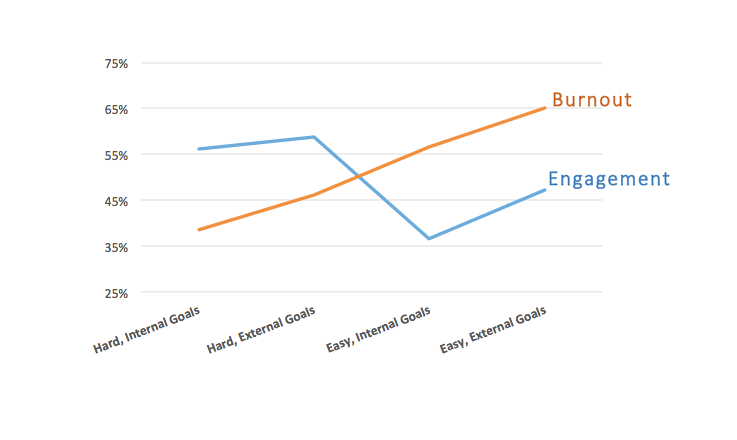The latest (Nov./Dec.) issue of Harvard Business Review features an article about motivating people, specifically related to goal setting (“Why You Should Stop Setting Easy Goals”). It focuses on challenges managers face when motivating a team: balancing goals that are high enough to challenge yet low enough to not cause discouragement. The authors cite research that shows, in certain situations, people perceive higher, more challenging goals as easier to reach and more appealing than lower goals.
This article’s findings align with broader research showing that our brains are more wired to avoid pain than they are to seek pleasure. How does this link with goal setting? Setting an easy, status-quo goal is – paradoxically – a bit more threatening because there is no upside. If you fail, you have no one or nothing to blame but yourself. However, if you set a hard goal, it’s simple enough to justify your failure as being due to the goal’s difficulty.
In this season of New Year’s resolutions, we’re diving into this goal-setting topic a little deeper and offering some practical suggestions.
Multiple Goal Factors.
With our new DRiV™ personality assessment tool, we’ve studied the results of more than 4,000 individual assessments conducted the past three years. The DRiV helps organizations discover what drives and drains their leaders, teams, and cultures.
In the field of psychology, goal-setting research often considers two major aspects: goal difficulty (hard vs. easy) and goal source (internal vs. external). Our DRiV research shows these goal factors interact in multiple, interesting ways:
- People with a HARD GOALS mindset are 73% more engaged on average than those with an EASY GOALS mindset.
- The HARD GOALS mindset can be characterized as tough, sometimes unyielding in standards, unwilling to give up, and having a tendency to downplay the possibility of failure and its potential scariness.
- People with a HARD GOALS mindset are 55% less burnt-out on average than those with an EASY GOALS mindset.
- People with an INTERNAL GOALS mindset are 72% less burnt-out on average than those with an EXTERNAL GOALS mindset. The INTERNAL GOALS mindset embraces goals that are grounded in one’s own personal values, that push an individual to grow and stretch, and that are not related to vanquishing a competitor.
Here’s a visual representation of these DRiV findings:

Setting Your Own Goals.
If you’re considering making your own New Year’s resolutions, remember that Hard/Internal goals offer the greatest upside. Here are four suggestions:
- Make them challenging. Do something that scares you a little and forces you to learn something new.
- Keep them measurable. Track and celebrate your success in ways meaningful for you.
- Choose something you truly find enjoyable, aligned with your values.
- Avoid a competitive, “keeping-up-with-the-Joneses” approach, which invites stress and frustration.
From all of us at LWF, we wish you a happy & productive New Year!

